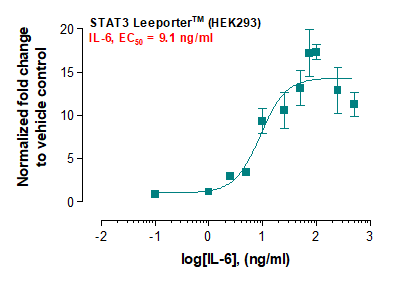|
|
| Gene : |
NLRP2 |
| Gene ID : |
55655 |
| Uniprot ID : |
Q9NX02
|
| Alternative Name : |
NLRP2, NALP2, NBS1, PAN1, PYPAF2 |
| Immunogen Information : |
A synthetic peptide of human NALP2 (amino acids 97-115 LKSFNKRKPLSLGITRKER) was used as immunogen for this antibody |
NALP2 (also known as PAN1/PYPAF2) is a member of the NLR (NACHT-LRR) family which includes both NODs and NALPs. Whereas This antibody recognizes NALP2; which is a 1062 amino acid protein. Alternative names for the NLR family include CATERPILLER, NOD and NOD-LRR. NLR family members are thought to be intracellular pathogen-recognition receptors (PRRs). At least fourteen NALPs have been identified in the human genome, and a common feature among NALPs 1-3, 6, and 12 is their ability to recruit the adaptor protein ASC through a homotypic PYD-PYD interaction, which in turn recruits caspase-1 through a CARD-CARD interaction. The oligomerization of NALPs is thought to bring the inflammatory caspases into close proximity leading to their activation within the inflammasome. The NALP2/3 inflammasomes contain, in addition to NALP2 or NALP3, the caspase recruitment domain (CARD)-containing protein Cardinal, ASC and caspase 1. Processing of the pro-inflammatory cytokines IL-1b and IL-18 by caspases leads to to the secretion of active cytokines and elicits a potent inflammatory response. The expression of NALP2 is upregulated in THP-1 macrophage cells by LPS and certain cytokines including interferon g and b, supporting a role for NALP2 in host-defense and inflammation. Additionally, NALP2 is expressed in several human tumor cell lines. However, the endogenous expression of NALP2 varies widely among tumor cells lines, with the highest levels found in MCF-7 and MDA-MB-435 breast cancer, Caco2 colon cancer and UACC62 melanoma cells. This antibody recognizes NALP2; human NALP2 is a 1062 amino acid protein, it is specific for NALP2 does not cross-react with related family members PAN2 or NAC.
WB: 1:1000-1:2000, IHC (paraffin): 1:1000-1:5000, IHC (frozen): Users should optimize, IP: 1:50-1:200
For Research Use Only. Not for use in diagnostic/therapeutics procedures.
| Subcellular location: |
Cytoplasm |
| Tissue Specificity: |
Expressed at high levels in lung, placenta and thymus and at lower levels in ovary, intestine and brain. |
| BioGrid: |
120787. 20 interactions. |
|
There are currently no product reviews
|




















.png)














